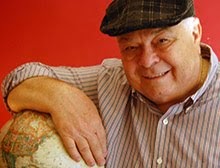 |
| Painting of Salzburg, Austria in winter by Hubert Sattler (wikipedia0 |
In today’s world
which is so often filled with turmoil and strife, the story of one of our most
beloved seasonal carols, “Silent Night”, is worth telling.
“Silent Night” was first performed on Christmas
Eve in a tiny church nearly 200 years ago when a small troupe of actors performing
in villages throughout the Austrian Alps came to the town of Oberndorf
Oberndorf bei Salzburg
is situated approximately 11 miles north of Salzburg ,
Austria on the shores of the
Salzach River village
of Laufen in Bavaria ,
Germany lies across the Salzach Bridge
The town had been split following the Napoleonic
Wars when the Principality of the Salzburg Archbishops divided it in 1816 after
the Congress of Vienna.
In the same year, a young priest, Father Joseph
Mohr, wrote a poem entitled “Stille Nacht” while living in Mariafarr, the
hometown of his father. A year later, Mohr moved to Oberndorf in 1817.
In 1818, the acting group was scheduled to
re-enact the story of Christ’s birth at the Church of St. Nicholas
Some say the organ was broken due to mice but
others claim that rust caused the problem.
Without an organ, the actors performed their
program in a private residence instead.
Reverend Mohr attended the program which was adapted
from the first chapters of the Gospels of Matthew and Luke in the New
Testament.
So impressed by the performance was Father Mohr
that he decided to take the long way home so he could meditate about the
season.
Mohr’s walk took him over the crest of a small
hill overlooking Oberndorf from which he could view the snow-covered panorama
shimmering in the moonlight beneath the stars. Reveling in the thoughts of the
performance he had just witnessed and the serenity of the cold wintry night,
the pastor peered down at the Christmas-card setting and recalled the poem he
had written the year before.
Mohr’s poem told the story of the night when
angels proclaimed the birth of the Messiah to shepherds tending their flocks on
a hillside.
As he gazed upon the village, something told
Reverend Mohr that his poem might make a good carol for the Christmas Eve
service the following night. The problem was that there was no music to which
the poem could be sung.
 |
| Church of St. Nicholas in Oberndorf, Austria where "Silent Night" was born nearly 200 years ago (wikipedia) |
The next day, Mohr went to visit his church
organist, Franz Xaver Gruber, and asked him if he could compose a melody
suitable for his poem that could be sung with a guitar.
With only a few hours to create his masterpiece,
Gruber created a tune that could be sung without the need of an organ. And so,
as circumstance would have it, “Silent Night” was born because the church where
it began had no organ.
The Oberndorf congregation heard the carol for the
first time on Christmas Eve in 1818 when Mohr and Gruber sang the words
accompanied by Gruber’s guitar.
Several weeks later, the well-known organ builder,
Karl Mauracher, arrived in Oberndorf to repair the broken instrument. To make
certain it was fixed, Mauracher told Gruber to test the organ before he
departed. Gruber sat down at the keyboard and began to play his simple but
elegant Christmas carol.
Mauracher was overwhelmed by the music. He took
copies back to his own village
of Kapfing
Both families were equally captivated and the following
yuletide season incorporated it in their Christmas repertoire.
The Strasser sisters spread the carol throughout
northern Europe and, in 1834, when King Frederick William of Prussia
By 1838, the Rainer family brought the song to the
United States where they
sang it in German at the Alexander Hamilton Monument
outside New York ’s Trinity Church
Nearly 50 years after it was written, “Silent
Night” was translated into English. Today the song has more than 200 versions
and has been translated into hundreds of languages.
Perhaps most meaningful however, came during the
Christmas truce of 1914 in World War I. It was then that “Silent Night” was
sung simultaneously in French, English and German by the troops on the front
lines. The reason – because it was the one carol that all the soldiers on both
sides of the battlefield knew.
Music is truly universal, and nowhere do the words
express it better than “Silent night, Holy night, All is calm, All is bright.”










































